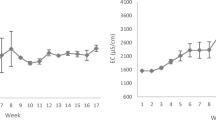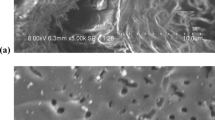Abstract
The presence of large amounts of phosphorus in wastewater is one of the primary causes of eutrophication, which has a detrimental impact on many natural water bodies. Prior to discharge to the stream, wastewater treatment plants should remove phosphorus from the effluent. In this study, (POC) is used as submerged attached growth systems to be introduced into the aeration tank of activated sludge systems which was evaluated for the removal phosphorus PO4 from synthetic wastewater. The experiments were conducted into different influent flow rates ranging from 5, 10, 15, 20, 25, and 30 L/d. Sampling was conducted every two days from the influent and effluent points. Parameters such as Phosphorus were monitored. Generally, PO4 was highly removed. The average removal of PO4 reached 88% for reactor A while 77% for reactor B with flowrate 5L/d. While for the first order kinetic model the substrate removal rate (K1) was found as 5 and 3.9 per day with a correlation coefficient (R2) of 0.9721 and 0.9718 for reactor A and B, respectively.
Access provided by Autonomous University of Puebla. Download conference paper PDF
Similar content being viewed by others

Keywords
1 Introduction
Phosphorus is a vital mineral for plant and animal development. However, phosphorus enrichment in water bodies such as rivers, and, lakes could cause abnormal development of hydrophytes, resulting in degradation of water quality and, eventually, eutrophication (Weihrauch and Weber 2020). Thus, phosphorus should be removed from domestic and industrial wastewater before being discharged into the stream (Bawiec 2019; Ayaz et al. 2012).
These nutrients are clearly in charge of the eutrophication (abnormal development of algae caused by an excess of nutrients in water bodies) of rivers, lakes, and oceans across the world. As a result, wastewater disposal creates a continual danger to the world's fresh water supply (Stewart et al. 2008; Noor et al. 2021).
Before discharge wastewater into bodies of water, phosphorus removal is typically required; but, in many situations, this is not done, resulting in widespread pollution on a global scale (De-Bashan and Bashan 2004). To remove phosphorus from wastewater, many techniques are currently used. While some of them are utilized in large-scale treatment facilities, others are just experimental initiatives, and as a result, are still being utilized on a short scale basis (De-Bashan and Bashan 2004). Phosphorus is eliminated in all situations by transforming the phosphorus ions in wastewater into a solid fraction. This percentage may consist of an insoluble salt precipitate, a microbiological mass in activated sludge, or plant biomass in built wetlands. Because phosphorus is extracted alongside other waste products, some of which are hazardous, these methods do not recycle phosphorus as a really sustainable product (Robles et al. 2020). Non-solubilized phosphates are either buried in landfills following organic waste incineration or utilized as sludge fertilizer if the treatment plant removes human pathogens and hazardous chemicals (Jagaba et al. 2021). In this research, the Palm Oil Clinker by-product, the residue from the steam boiler of the palm oil mill (Al-dhawi et al. 2020), is to be used as an attached growth system. The POC will be processed before being applied as an attached growth system. The effectiveness and efficiencies of using Palm Oil Clinker as attached growth media in the combined attached growth/conventional system in the removal of Phosphorus will be evaluated.
2 Methods and Materials
Two parallel continuous flow activated sludge systems treating synthetic domestic wastewater. In Reactor A, POC was used as the submerged attached growth media while Reactor B was used as a control reactor. Aeration and clarifier zones are present in both reactors A and B as shown in Fig. 1.
Continuous activated sludge reactor (CASR), reactors were fed synthetic wastewater until they reached a steady state. The working sludge age was maintained between 15 and 25 days. To realize the required sludge, about 10 mL of (MLSS) was taken every two days from the aeration tank for each reactor. All the reactors were run in suspended mode. Reactor A was act as Palm Oil Clinker submerged media in aeration tank and received the feeding from an influent source. Reactor B was act as control and received the feeding from influent sources. Operating parameters monitored during the study include (PO4).
3 Results and Discussion
3.1 Experimental Results for Removal of Phosphorus PO4
Phosphorus removal in the experimental operation was shown in the Fig. 2. The experimental approach evaluated the impact of flow rate on phosphorus removal. The flowrate was varied in the range of 5, 10, 15, 20, 25, and 30 L/d, respectively. The average influent PO4 was at 9 and 11 mg/L at various. The average effluent PO4 was at 1.1, 1.7, 2.3, 2.7, 3, and 3.4 mg/L and 2, 2.5, 3, 3.5, 4, and 4.5 mg/L for reactor A and B, respectively.
The results at steady-state conditions show that PO4 removal was high at longer HRT. The PO4 removal was at 88, 81, 74.4, 73.3, 70, and 66% and 77.7, 72.2, 66.6, 65, 60 and 55% for reactor A and B, respectively, with decreasing HRT for reactor A and B, respectively, in the range of 5, 10, 15, 20, 25 and 30 L/d, the results indicated the acclimation of phosphorus was successful in the reactor. Phosphorus taking up by microbes and used up by microbes for their nutrient’s wastewater (Yuan et al. 2012).
It was found out that the PO4 removal efficiency slightly reduce with changing in flow rate. It is well known that short HRT alters the dynamic balance, composition, and spatial distribution of the ecological structure of microbial systems and could decrease substrate removal efficiency due to incomplete biodegradation (Ma et al. 2009). The increase of flowrate coincides with an increase in substrate concentration and metabolic activities. The consumption of substrate results in cell synthesis and growth. Thus, at higher HLR, more substrate is supplied to the microorganisms which increases their metabolic activities.
3.2 First-Order Kinetic Model for PO4
The steady-state data were fitted into the plot of SO-Se/HRT Versus Se in Fig. 3. The substrate removal rate (K1) for reactors A and B was determined to be 5 and 3.9 per day, with correlation coefficients (R2) of 0.9721 and 0.9718, respectively. The magnitude of the first-order removal rate obtained in this research was greater than the report of Isik and Sponza (Işik and Sponza 2005), who obtained a K1 of 0.615 per day in a UASB reactor treating wastewater, and lower than the report of Amin et al. who obtained a K1 of 49.81 per day in a non-adapted treating wastewater (Amin et al. 2014).
4 Conclusions
The performance of palm oil clinker showed high efficiency in removing phosphorus more than control in all experimental conditions. The average removal of PO4 reached 88% for reactor A while 77% for reactor B with flowrate 5 L/d. While for the correlation coefficient (R2) of 0.9721 and 0.9718 for reactor A and B, respectively. The submerged media provided a large surface area for biomass. The submerged media served as a filtration medium for nutrient removal throughout the study.
References
B.N. Al-dhawi, S.R. Kutty, N.M. Almahbashi, A. Noor, A.H. Jagaba, Organics removal from domestic wastewater utilizing palm oil clinker (POC) media in a submerged attached growth systems. Int. J. Civ. Eng. Technol. 11(6), 1–7 (2020)
B.N.S. Al-dhawi, S.R.M. Kutty, A.A.S. Ghaleb, N.M.Y. Almahbashi, A.A.H. Saeed, A.B.A. Al-Mekhlafi, Y.A.A. Alsaeedi, A.H. Jagaba, Pretreated palm oil clinker as an attached growth media for organic matter removal from synthetic domestic wastewater in a sequencing batch reactor. Case Studies in Chemical and Environmental Engineering 7, 100294 (2023).
S.C. Ayaz, Ö. Aktaş, N. Findik, L. Akça, Phosphorus removal and effect of adsorbent type in a constructed wetland system. Desalin. Water Treat. 37(1–3), 152–159 (2012)
A. Bawiec, Efficiency of nitrogen and phosphorus compounds removal in hydroponic wastewater treatment plant. Environ. Technol. 40(16), 2062–2072 (2019)
L.E. De-Bashan, Y. Bashan, Recent advances in removing phosphorus from wastewater and its future use as fertilizer (1997–2003). Water Res. 38(19), 4222–4246 (2004)
B.N.S. Al-dhawi, S.R.M. Kutty, G. Hayder, B.M.E. Elnaim, M. Mnzool, A. Noor, A.A.H. Saeed, N.M.Y. Almahbashi, A. Al-Nini, A.H. Jagaba, Adsorptive Removal of Boron by DIAION™ CRB05: Characterization, Kinetics, Isotherm, and Optimization by Response Surface Methodology. Processes 11(2), (2023).
A. Jagaba et al., Sequencing batch reactor technology for landfill leachate treatment: a state-of-the-art review. J. Environ. Manage. 282, 111946 (2021)
Y. Ma, Y. Peng, X. Wang, Improving nutrient removal of the AAO process by an influent bypass flow by denitrifying phosphorus removal. Desalination 246(1–3), 534–544 (2009)
A. Noor, S.R. Kutty, N.M. Almahbashi, V. Kumar, A.A. Ghaleb, B.N. Al-Dhawi, Integrated submerged media extended aeration activated sludge (ISmEAAS) reactor start-up and biomass acclimatization. J. Hunan Univ. Nat. Sci. 48(9) (2021)
Á. Robles et al., New frontiers from removal to recycling of nitrogen and phosphorus from wastewater in the circular economy. Biores. Technol. 300, 122673 (2020)
B.N.S. Al-dhawi, S.R.M. Kutty, L. Baloo, N.M.Y. Almahbashi, A.A.S. Ghaleb, A.H. Jagaba, V. Kumar, A.A.H. Saeed, Treatment of synthetic wastewater by using submerged attached growth media in continuous activated sludge reactor system International Journal of Sustainable Building Technology and Urban Development, 13(1), 2-10 (2022).
C. Weihrauch, C.J. Weber, Phosphorus enrichment in floodplain subsoils as a potential source of freshwater eutrophication. Sci. Total Environ. 747, 141213 (2020)
Z. Yuan, S. Pratt, D.J. Batstone, Phosphorus recovery from wastewater through microbial processes. Curr. Opin. Biotechnol. 23(6), 878–883 (2012)
Acknowledgements
The authors would really like to convey their heartfelt appreciation to UTP and the Fundamental Research Grant Scheme (FRGS) under grant cost center 015MA0-092.
Author information
Authors and Affiliations
Corresponding author
Editor information
Editors and Affiliations
Rights and permissions
Copyright information
© 2023 The Author(s), under exclusive license to Springer Nature Switzerland AG
About this paper
Cite this paper
Al-dhawi, B. et al. (2023). Phosphorus Removal from Synthetic Wastewater by Using Palm Oil Clinker as Media in Continuous Activated Sludge. In: Salih, G.H.A., Saeed, R.A. (eds) Sustainability Challenges and Delivering Practical Engineering Solutions. Advances in Science, Technology & Innovation. Springer, Cham. https://doi.org/10.1007/978-3-031-26580-8_8
Download citation
DOI: https://doi.org/10.1007/978-3-031-26580-8_8
Published:
Publisher Name: Springer, Cham
Print ISBN: 978-3-031-26579-2
Online ISBN: 978-3-031-26580-8
eBook Packages: Earth and Environmental ScienceEarth and Environmental Science (R0)






